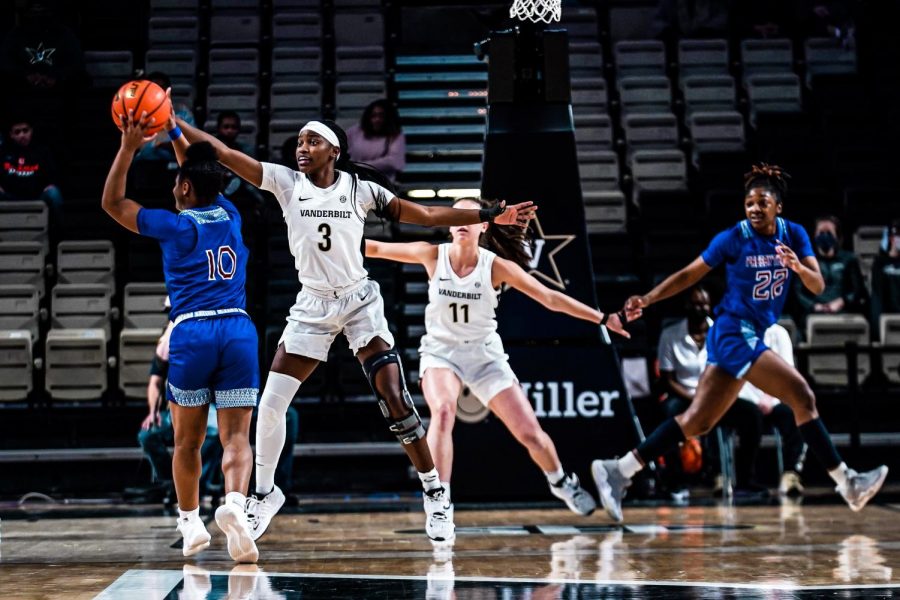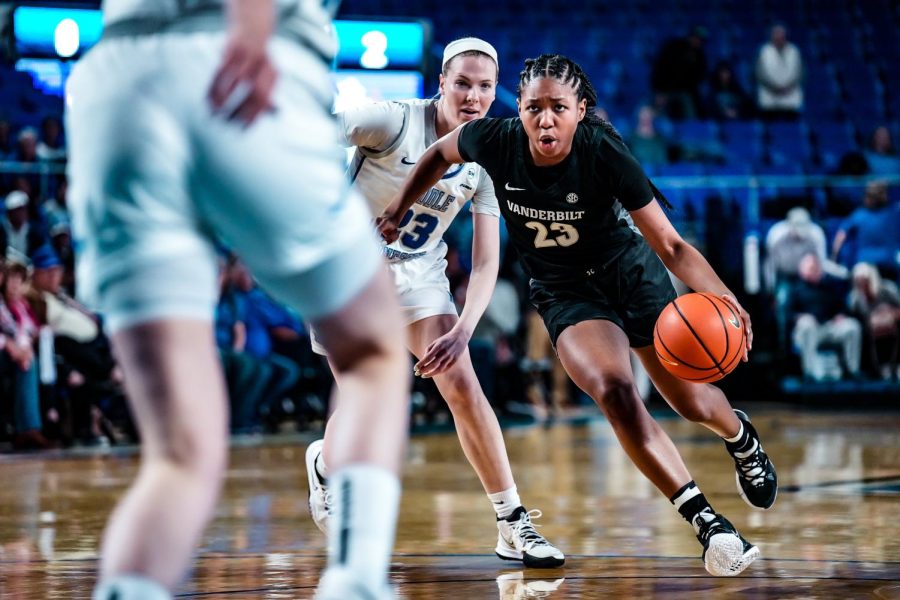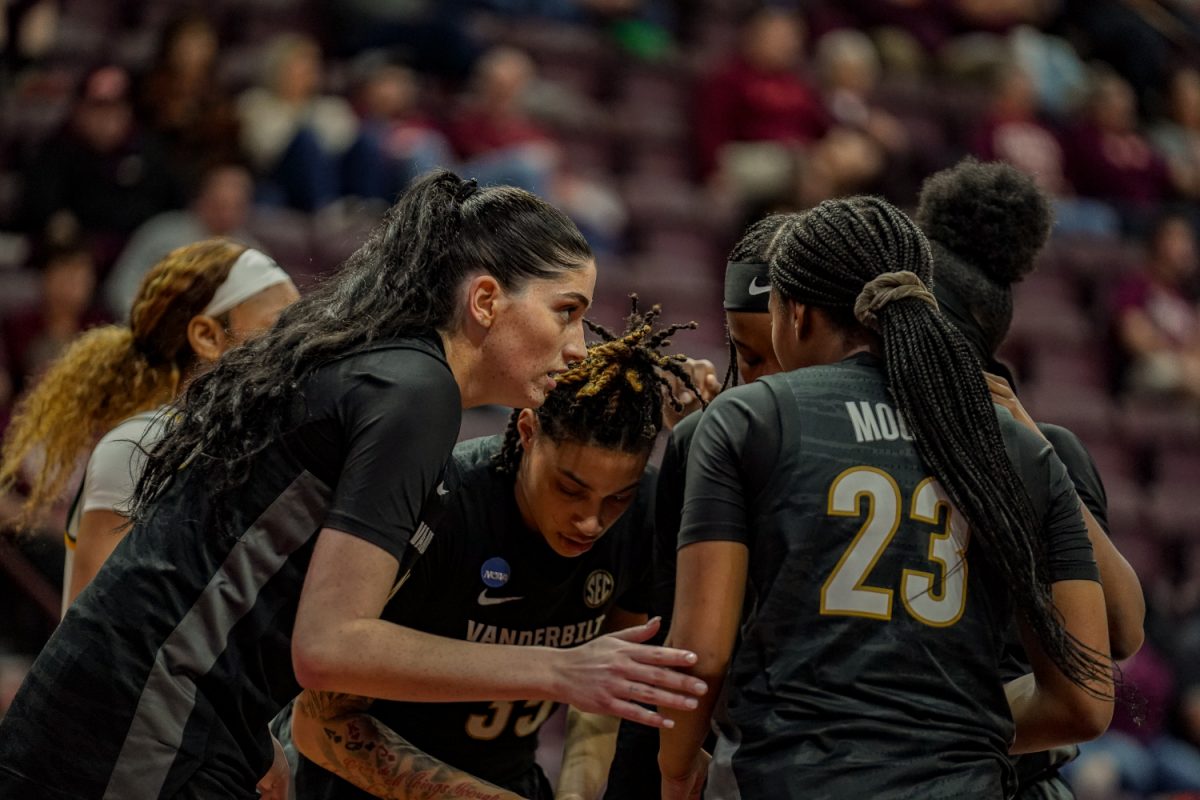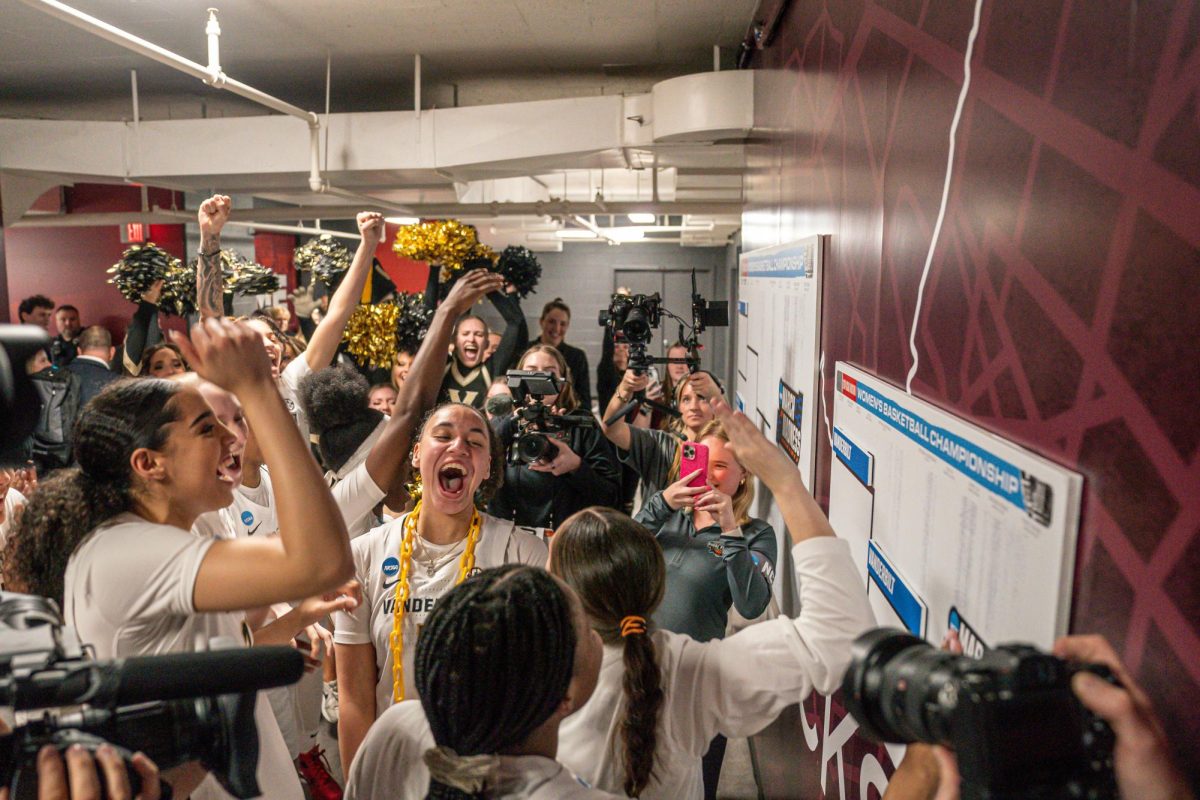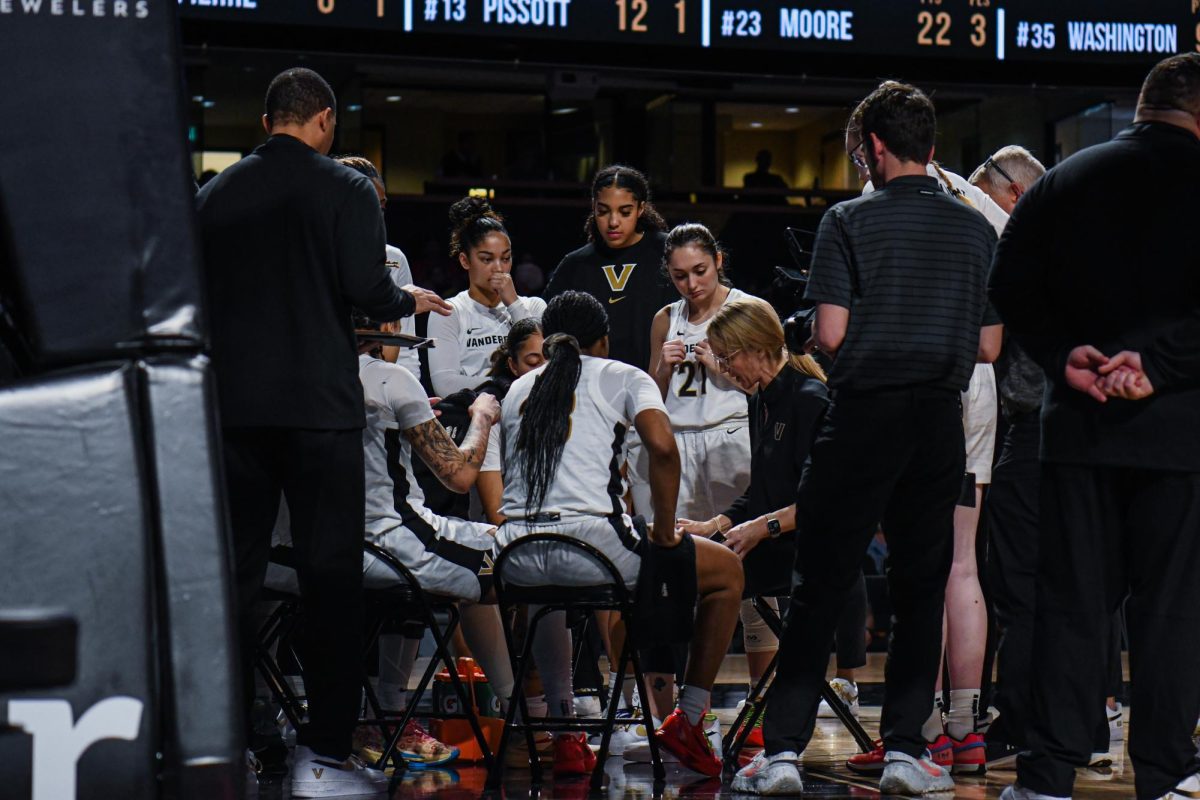The Vanderbilt women’s basketball team shocked many people on Thanksgiving Day when they held a lead against the then-No. 9 team in the country, the University of Arizona. Although they didn’t hold on, the next day, they convincingly beat a top-150 opponent, Rutgers. But the Commodores were not done, as they led yet another top-50 ranked opponent, DePaul, by double digits going into halftime before ultimately letting their lead slip away. Although the Commodores ended up winning only one of those three games, head coach Shea Ralph’s team showed Commodore fans and their opponents that they are a team that must be taken seriously.
However, this tournament performance came as a surprise to many Commodore fans. It was surprising not only because of the two disappointing losses the Commodores took a week prior to Little Rock and Middle Tennessee State, but also because the Commodores have two glaring issues: inconsistent scoring and undersized post players. Senior Brinae Alexander leads the team with roughly 12 points per game and has been on a hot streak since the tournament.However, consistent second and third scoring options are sometimes lacking, leading to scoring droughts. Furthermore, although all of the Commodores post players, and particularly Sacha Washington and Yaubryon Chambers, are very skilled offensive players and capable defensive players, they are often at a disadvantage due to their lack of size. Both these issues were anticipated by Commodore fans. So how has Ralph and company overcome these shortcomings?
Defense.
While watching the Commodores’ defense so far this season, there is only one word that comes to mind: suffocating. Thus far this season the Commodores have overwhelmed their opponents defensively, forcing at least 20 turnovers in seven straight games, with senior Jordyn Cambridge second in the nation in total steals. This tenacious defense is not something that many fans have been used to seeing the past couple of seasons, but it is Ralph’s hope to change that and build a winning culture. In the words of Ralph, that culture begins with defense.
The biggest change this year on the defensive end of the floor is aggressiveness. Oftentimes in the past, Commodores fans saw conservative defense, whereas this year Ralph has instituted an aggressive trap defense that generates a significant amount of turnovers.
Almost as soon as the opposing guard crosses half court, and sometimes even before, a combination of Vanderbilt’s senior guards, Jordyn Cambridge and Brinae Alexander aggressively trap the ball, allowing the wings to cover initial passes and the center to monitor the post. This scheme never allows the opposition to rest on offense, and as a result, even if it is not generating turnovers at the typical rate, it is physically exhausting for the other team. Because of this, the Commodores are a top-20 team in the country in steals.
Why does it work?
The reason that this defense works for the Commodores is very simple: it hides the team’s weaknesses. The easiest way to create offense when your half-court offense struggles at times is through defense. Their aggressive defense allows the Commodores to have significantly more fastbreak opportunities than in the past, creating easy offensive opportunities. Furthermore, even when the steals and turnovers do not lead to easy fastbreak opportunities, the opposing defense is still not completely set due to the turnover. This allows for easier circumstances to quickly execute their half-court offense.
In essence, the tenacity of the defense can, on some occasions, nullify or hide some of the offensive problems that the Commodores have been prone to in the past. For example, against Kansas, Vanderbilt had 24 points generated from turnovers, and against Chattanooga, the Commodores had 38 points off turnovers and 25 fast break points, leading to a season high of 91 total points.
Additionally, this new defense also hides Vanderbilt’s lack of size. The Commodores’ lack of size becomes very evident in the half-court when the opposing team, assuming that they have an of-size post player, has the ability to set up their offense. This will likely be an even greater issue when it is time for conference play, as the Commodores will be even more undersized against SEC opponents. However, the point of this defense is to not allow opposing teams to set up their half-court offenses.
When executed properly, this scheme nullifies the lack of size because guards aren’t able to easily get the ball to their post players nor set up their half-court offense. This trap defense does often leave one of the post players open; however, if Commodore guards set adequate pressure in their traps, the opposing guard either isn’t able to see her open post player, cannot get the ball to her or gets the ball to her so late that one of the three Commodores off the ball can recover. In the latter instance, if the recovery is on time, Vanderbilt has the ability to shift and provide help so that it does not become a game of one-on-one in which the Commodore defender is undersized.
In sum, this defense crafted by Ralph and company works because it does an excellent job of nullifying the Commodores’ two major weaknesses. However, without superb execution from all the players, but specifically, the tenacity that the backcourt duo of Brinae Alexander and Jordyn Cambridge bring every time they step on the court, it would not be effective. Although this scheme has not manifested in as many wins as the Commodores would like, fans should be excited about the evident growth and inevitable success of this group.

